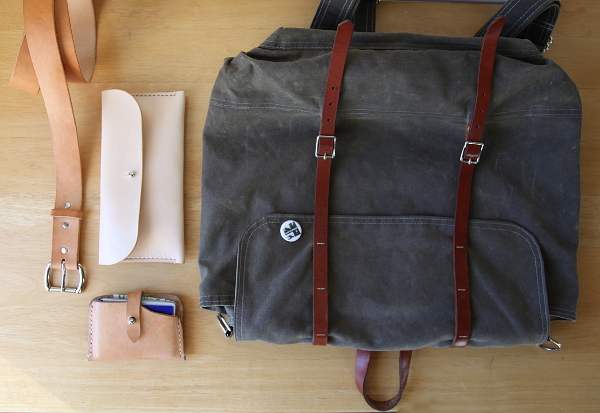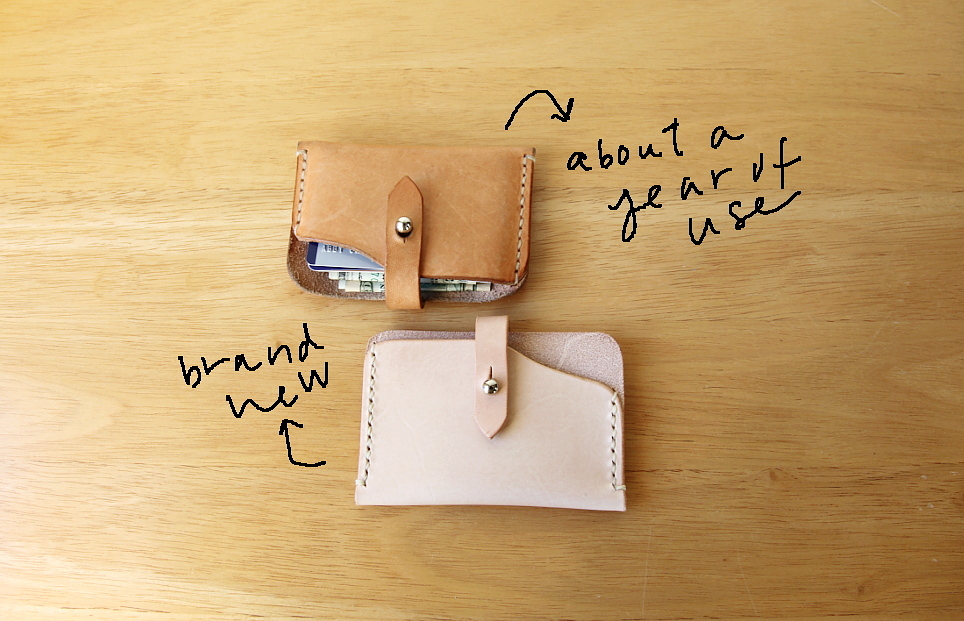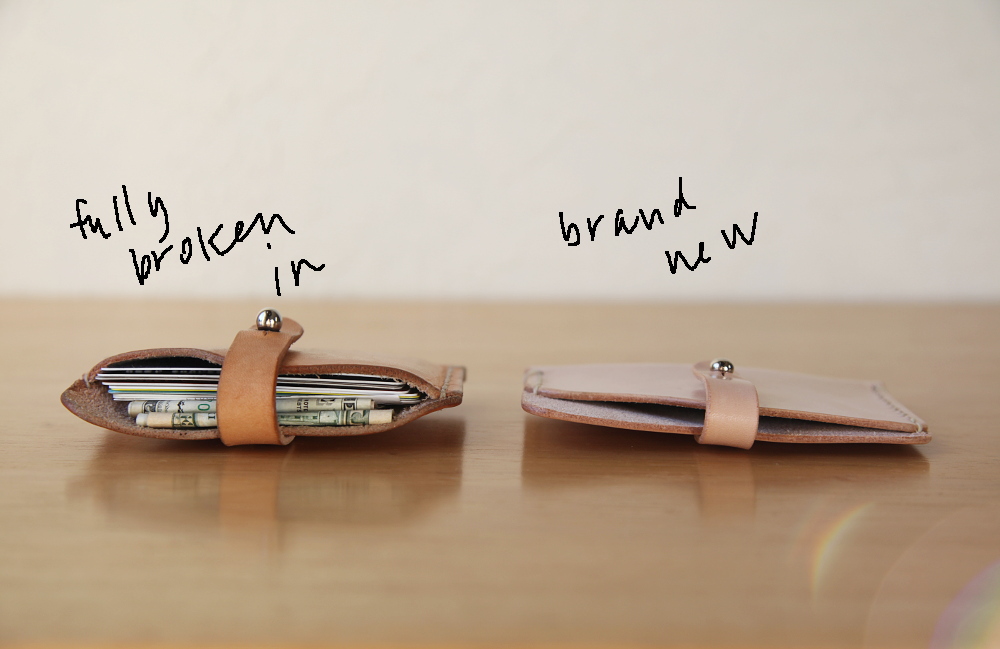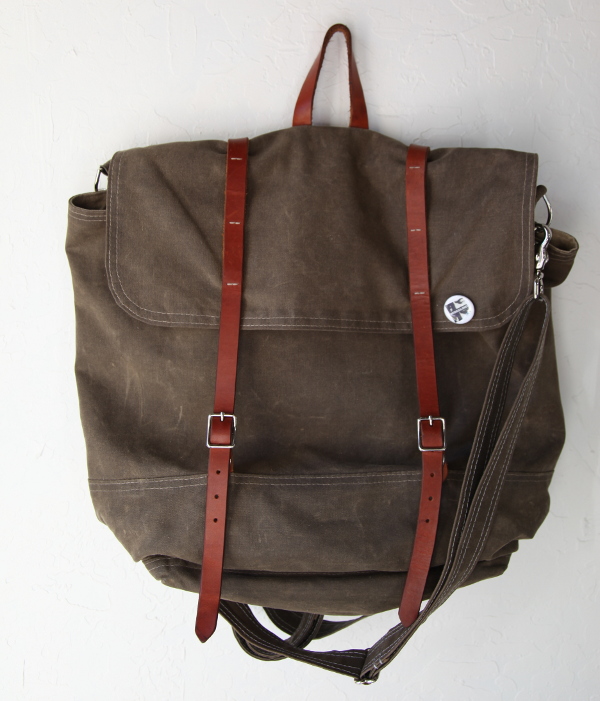All of the leather shown above is undyed. The colors achieved are simply the result of time, general use, and sun exposure.
.
I am asked the question, “what is vegetable tanned leather?” pretty often. Sometimes people wonder if it’s even real leather… is it made of vegetables?
Tanning is the process of treating animal skin to produce leather. All leather is tanned in one way or another. It is what converts an animal skin into a functional, usable material. The 2 most common types of tanning you will likely hear of include chrome (or mineral) tanning and vegetable tanning.
“Vegetable tanned” means the process of tanning leather has been achieved with tannins, and other ingredients found in plant matter – most commonly tree bark. Vegetable tanning is an age old traditional method, which is often done by hand, by skilled artisans. It is a lengthy process from start to finish, which can take up to 60 days. By the use of natural tannins, vegetable tanned leather improves rather than degrades with age. It starts out with a firmer temper – feeling stiffer than chrome tanned leather – and then becomes soft and supple, and develops a rich patina on it’s surface. In a sense, vegetable tanned leather is like a living organism, responding to it’s environment.
Chrome tanned leather makes up the majority of the leather you will find on the retail market. Chrome tanning employs the use of chemicals, acids and salts (including chromium sulphate), and the process is quick, taking only one day. It is easily mass produced, and highly toxic to the environment, as well as the people involved in the tanning process. Leather tanned with chemicals doesn’t wear well, and eventually often cracks and becomes brittle.
I have been exploring the world of leather over the last couple years, and when I first got my hands on a side of vegetable tanned cowhide, I could immediately smell and feel the difference. It invites you to handle it. The smell is soft and comforting. The subtle variation in grain and color from piece to piece is exciting and beautiful. One of the more notable features of natural vegetable tanned leather, for the end user, is the change that occurs over time. What begins a pale flesh tone, gradually transforms to a rich chestnut or cognac brown. The end color will vary somewhat, depending on the exact tannins used – from reddish brown to golden brown. This change can be accelerated with the application of oil, and with sun exposure. Just as your skin can get a suntan, so will vegetable tanned leather.
The rucksack above, which belongs to a customer of mine, has been in regular use for about a year. The leather has not been dyed! My wallet shown above would be quite a lot darker if I were to leave it out in the light each day. Since it spends most of it’s time in my bag or my pocket, the change has been more gradual. If you were to inspect my wallet closely you would see where the oils from my hands have darkened the edges, and the subtle gradations from light to dark, depending on each area’s exposure and wear. The way a quality wallet (or pair of shoes, or bag, etc) wears, can say a lot about the user and the life of the item. I love that.
This post just scratches the surface of all there is to know about leather, but it should help gain an understanding of some of the basics.
For anyone interested, here are a couple of further resources.
A wikipedia article on leather:
en.wikipedia.org/wiki/Leather
and an encyclopedia brittanica entry on tanning:
http://www.britannica.com/EBchecked/topic/582713/tanning
.






rebecca
This is so interesting! and by the way…I did get a rucksack for Christmas this year and I LOVE it and I’ve gotten a lot of compliments on it. You do amazing work.
caring for your leather goods – ShopInfusion
[…] If you’d like to learn a little more about leather, including some of the differences between some of the types of tanning, see this post. […]